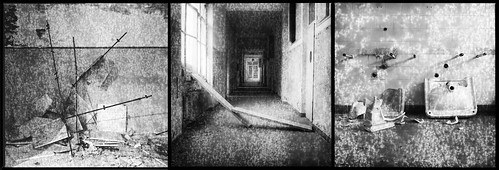

Balthus Van Tassel
A million dots in empty spaces
Black and white film is little more than specks of silver on a roll of plastic, protected from light until the moment you need it. There’s more to it than that of course. You can read the Ansel Adam’s Guide (or any other photography guide of your choice) and find out everything you need to know about emulsions and halides and cellulose and all the rest. But stay with me on this – Silver, that’s all we need to keep in mind for now.
Those specks of silver halide – the way they change in the factory processes, then when they’re exposed to light in the camera, and how they react to the chemicals when the roll is developed. It all contributes to the magic of black and white photography.
Now and then something will go wrong – one of the sinking moments that every film photographer will know by heart. When the roll is fished out of the developing tank and there are dark streaks where it was exposed to the light, or tide marks where chemicals have lingered too long. And sometimes there are a million dots, as out of place as snow in a July heatwave.
But here, as I know you will agree — these million dots that were caused by an unknown slip between the factory floor and the final rinsing tank — are the perfect addition, a sprinkle of silver (my most favourite of precious metals by the way) that adds a final touch to this scene of beautiful abandonment.
Blog photograph copyrighted to the photographer and used with permission by utata.org. All photographs used on utata.org are stored on flickr.com and are obtained via the flickr API. Text is copyrighted to the author, Debra Broughton and is used with permission by utata.org. Please see Show and Share Your Work
